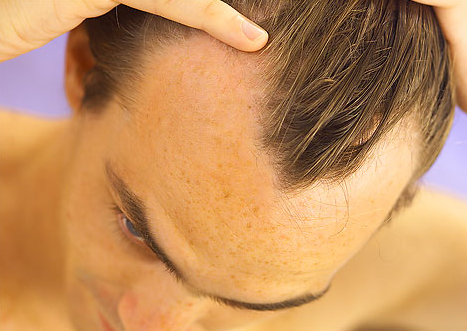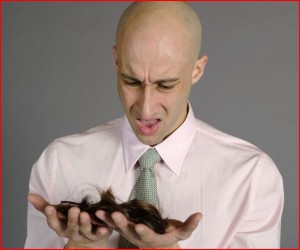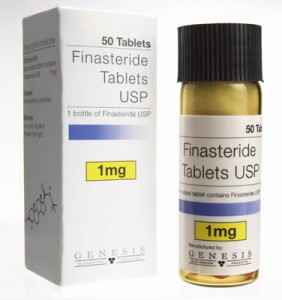Posts Tagged ‘finasteride’
Monday, October 14th, 2013
Every now and then there is a new and exotic advertisement going around claiming it can help lessen or stop hair loss. When these advertisements are published in sources that seem reputable, the average consumer may start to believe them. At US Hair Restoration, many of our patients send in questions regarding how real these methods and devices are, and if they should give it a try. In reality however, there are only a few real-world techniques that can actually help hair loss:
- Hair transplantation – the only permanent solution for hair loss. Hair is moved from the permanent zone to the balding area.

- Hair loss medications – Includes medications such as Finasteride and Minoxidil, which can slow down the hair loss process.
- Ketoconazole and Bimatoprost solutions – Two other solutions that appear to stimulate hair growth as one of their side effects.
- Herbel remedies – A few herbal remedies such as saw Palmetto that include DHT blocking properties.
Hair restoration has become a huge market, with over 60% of white males over the age of 50 having experienced some hair loss that requires treatment. By looking at these numbers, it is no wonder why so many of these companies are trying to capitalize on it. As a result, many devices are released, such as LED light hats, laser combs, magnetic devices, heating caps, and so on. Most of them claim that they can benefit the consumer and help hair loss, but these companies are only looking to make a quick dollar. Since they seem harmless and are relatively cheap, consumers are not hesitant to spend money and buy them if it will positively impact their appearance.
Since there are no regulations to put a stop to these types of advertisements, they will always be available on the market. The best advice is to seek a skilled hair transplant surgeon and disregard the other gimmicks.
Tags: finasteride, Hair loss medications
Posted in Beverly Hills hair transplant, Hair Loss, hair loss medication, hair loss products | No Comments »
Tuesday, February 21st, 2012
 We receive a lot of questions at US Hair Restoration about the use of Minoxidil (Rogaine), and how it affects hair growth after a hair transplant procedure. There are mixed reviews people find on the internet through different websites and blogs about the Foam version of Rogaine. Some say it helps hair growth, others say it hinders, while some claim it does absolutely nothing. We receive a lot of questions at US Hair Restoration about the use of Minoxidil (Rogaine), and how it affects hair growth after a hair transplant procedure. There are mixed reviews people find on the internet through different websites and blogs about the Foam version of Rogaine. Some say it helps hair growth, others say it hinders, while some claim it does absolutely nothing.
Minoxidil (Rogaine) may be used after a hair transplantation on the newly transplanted area, for protecting the already existing hairs which are genetically predisposed to thinning. The hair grafts which are actually transplanted from the donor area require no medication for growth and maintain a permanent residence in the balding area. Those are the healthy hairs which are not affected by the hormone DHT (Dehydrotestosterone) which causes thinning and baldness.
 There may be some loss of existing native hair in the balding area due to shock loss, and for this we recommend Propecia for male patients to protect against. Propecia is proven to work better then Rogaine for the prevention of shock loss in men, and continues to have remarkable results in the patients who use the medication as directed. Unfortunately it does not work on women, but in these cases Rogaine does work and is a recommend option for the first few months after hair restoration surgery. There may be some loss of existing native hair in the balding area due to shock loss, and for this we recommend Propecia for male patients to protect against. Propecia is proven to work better then Rogaine for the prevention of shock loss in men, and continues to have remarkable results in the patients who use the medication as directed. Unfortunately it does not work on women, but in these cases Rogaine does work and is a recommend option for the first few months after hair restoration surgery.
Tags: female hair loss, finasteride, Male Hair Loss, minoxidil, propecia, rogaine, shock loss
Posted in after hair transplant, hair loss complications, hair loss medication, men hair restoration, women hair loss | No Comments »
Friday, October 21st, 2011
 Hair loss and hair thinning is a result of testosterone formed in different areas like the prostate gland or hair follicles, which is converted to Dihydrotestosterone (DHT) in the scalp area. Hair follicles prone to genetic male patterned baldness contain DHT receptors, thus thinning hair and loss of hair can result. Over time men produce an abundance of DHT and the molecules affect their hair follicles and cause a decrease in size and eventually see their natural hair fall out permanently. Because of this common occurrence, hair loss in men is frequent. Hair loss and hair thinning is a result of testosterone formed in different areas like the prostate gland or hair follicles, which is converted to Dihydrotestosterone (DHT) in the scalp area. Hair follicles prone to genetic male patterned baldness contain DHT receptors, thus thinning hair and loss of hair can result. Over time men produce an abundance of DHT and the molecules affect their hair follicles and cause a decrease in size and eventually see their natural hair fall out permanently. Because of this common occurrence, hair loss in men is frequent.
DHT and hair loss from having the gene for male pattern baldness are the most common factors for male pattern baldness. Women suffering from female-pattern baldness, unlike their counterparts with male-pattern baldness, are not usually characterized by higher production rates of DHT from lower levels of testosterone. On the other hand, if for a number of possible reasons, a woman has increased testosterone, she can develop female patterned baldness like a man does through the same mechanism.
Hair in the prone areas to male patterned baldness: Corners, top, and crown are filled with DHT receptors in men who suffer Androgenic Alopecia The hair on donor areas such as back and sides, however, have fewer DHT receptors. This is precisely why hair is more permanent on the sides and back and not the top and front.

The distinction in the hair quality of different areas, such as the donor and recipient areas, allows for hair loss surgeons to remove the hair from one area and transplant it to the bald portions of the scalp. These newly transplanted hairs are permanent and immune to DHT. Finasteride (Propecia) is a drug which blocks the conversion of testosterone to DHT as a result of it blocking the enzyme alpha reductase. The amount of DHT in hair loss patients decrease when they are on Propecia and this helps to maintain healthy hair, and also helps some of the miniaturized hair become stronger.
We at US Hair Restoration often recommend medical treatment with DHT blockers in many of our patients who undergo a hair transplantation procedure in order to help maintain their own hair in addition to the newly restored, formerly balding areas because of a hair restoration surgery.
Tags: androgenetic alopecia, dht, DHT blockers, DHT receptors, dihydrotestosterone, female patterned baldness, finasteride, hair restoration surgery, propecia, testosteron
Posted in hair loss complications, Hair Loss Conditions, hair transplant, men hair restoration, women hair loss | No Comments »
Tuesday, November 30th, 2010
Q:
Good Afternoon Dr. Mohebi,
I recently was recommended to go on a medication for body building purposes by my trainer. The medication that I am planning on starting is called ANAVAR (an anabolic steroid). Because I am currently taking Propecia, as prescribed by you, I just wanted run ANAVAR by you to make sure it would be OK to take in conjuction with Propecia.
I appreciate all of your help, Thanks!
A:
Anavar (oxandrolone) is a weak androgen and is considered an anabolic steroid. It is indicated as adjunctive therapy to enhance weight gain after weight loss due to an extensive surgery, infectious disease, trauma and so on. Anavar has also been prescribed to some patients who for no reason fail to gain weight despite of  proper nutrition and work out schedules. It may also be used to maintain normal weight or to prevent the catabolism due to prolonged administration of corticosteroids. proper nutrition and work out schedules. It may also be used to maintain normal weight or to prevent the catabolism due to prolonged administration of corticosteroids.
There have been some online reports of hair loss with Anavar’s use and some exagerated hair loss reports in patients who take both Propecia (finasteride) and Anavar (oxandrolone) in conjunction. Although my personal searches in medical publications have never revealed any studies supporting this information, reports can be found online by its claimed users.
Overall, my general recommendation is: unless there is a strong medical indication for its use, people with any evidence of male patterned baldness should stay away from anabolic steroids. Although you may find some anabolic steroids over the counter, your family doctor should always be involved and aware of any anabolic steroids that you take as part of your body enhancing plan.
Tags: anabolic steriods and hair loss, Anavar, finasteride, hair loss, oxandrolone, propecia
Posted in hair loss complications, hair loss medication, hair loss products, hair transplant, men hair restoration, Uncategorized | No Comments »
Sunday, May 2nd, 2010
 Q: Q:
I started the Propecia at the beginning of March (8 months ago), prior to the procedure last March. Should I still be on it?
A:
It is great to hear from you and I am glad you are happy with the result of your hair transplant. The final result of your hair may still get better up until one full year after your surgery if you allow your hair on the transplanted area to grow longer.
Finasteride as a hair loss medication was mostly prescribed for prevention of shock loss or losing native hair on the balding areas after a hair transplant. You have significant miniaturization on the front, top and crown area (90%-100%), which makes your preexisting hair on balding areas prone to further hair loss. Now that you had your transplanted hair grown, you can decide to stop Propecia. By doing that, you may risk losing your own hair on the balding area further (transplanted hair does not need Propecia for its growth) or you can continue taking the medication to increase the longevity of your preexisting hair on those areas.
Tags: after hair transplant, finasteride, propecia, shock loss
Posted in hair loss medication, hair loss products, hair transplant, men hair restoration | No Comments »
Saturday, January 9th, 2010

The possibility of restoring hair loss through alternative hair restoration options such as by using finasteride or Rogaine is an issue some people may be wondering about. Although hair restoration through these shortcut methods (without a hair transplant procedure) might be OK for some people, I can’t advocate it as a full-fledged solution. Advertisements may try to sway you into believing it is the answer.
Today, FDA has OK’d certain medications for hair loss prevention: finasteride and minoxidil. I must say, both are legitimate treatments, but they may have various indications for a male and female baldness pattern. But they are not, I repeat, they are not a cure-all solution for male patterned baldness, as other pharmacy industry experts may try to get you to believe.
A hair transplant ought to be thought of as a preventive agent, along with other alternativest. And also as vital part of a bigger plan on looking your best. A lot of men and women experience shock loss after a hair transplant surgery; these people are required to try preventative measures like finasteride, at least a month or two before the hair transplant.
Since hair restoration surgery started (in the 1990s) and until recently, when a hair restoration surgery was done, shock loss had been a significant issue hair transplant patients had to deal with.
But these days, a good majority of patients go on finasteride after a hair transplant surgery.
Tags: fda, finasteride, hair loss treatment, medical hair restoration, minixidil, prevention of balding, shock loss
Posted in Bakersfield hair transplant, California hair transplant, hair loss medication, hair loss products, Newport Beach hair transplant, Orange County hair transplant | No Comments »
Tuesday, January 5th, 2010

The fruit Serenoa Repens produces Saw Palmetto. Saw Palmetto is an extract of it. Saw Palmetto has plenty of fatty acids and phytosterols. Considered by many to be an alternative medicine for different kinds of indications, most notably benign prostatic hyperplasia (BPH).
People who are diagnosed with benign prostatic hyperplasia (BPH) have enlarged prostates have difficulty urinating to the point that patient may need prostate surgery for it.
The part Saw Palmetto plays in hair restoration has been well researched. Incredibly, for a lot of people, Saw Palmetto is a plant-based treatment which, up to a certain point, can reverse the hair loss process or delay hair loss. Saw Palmetto’s bio active ingredients block the conversion of testosterone into dihydrotestosterone (DHT).
So, on the hair follicle level, Saw Palmetto is able to halt the process of hair loss. In addition, Saw Palmetto promotes the increased thickness of miniaturized hair, helping them grow longer. In mechanism, the Saw Palmetto effect is sort of similar to finasteride or other DHT blockers. Available in oil extract, Saw Palmetto can be used topically on hair scalps or as pills to treat prostate enlargement.
Tags: balding prevention, benign prostatis hyperplasia, BPH, dht, dihydrotestostrone, finasteride, hair loss product, hair loss treatment, male patterned baldness, saw palmetto, Saw Palmetto Extract
Posted in California hair transplant, hair loss medication, hair loss products, men hair restoration, Newport Beach hair transplant, Orange County hair transplant | No Comments »
Monday, November 16th, 2009

Q:
Hey Doc:
My hair is as thin as the state of economy; I’m trying to figure out how to make it stronger. Two products I tried are, Chronostin, suggested by my barber; the other one was recommended to me by my psychiatrist: it’s called Minoxidil, Estradiol Vateral, Esopropyl Acohol.
I’d like to hear your expert advice on these products, doc?
Yours truly,
A:
I commend you for seeing a skin doctor. As part of your dermatologist’s diagnosis, I’m quite certain he took a look at you to see if there was miniaturization of hair leading to hair loss in men. Let me add that combining minoxidil with other hormonal medications hasn’t been proven to be a solution to hair loss. You were probably diagnosed with male pattern baldness and then the doctor decided to recommend it. Since that’s what happened, you might also want to try finasteride, a medication much more powerful compared to Minoxidil, based on a few research publications.
The other product, Chronostim, I don’t know what that is. But, being the dedicated doctor I am, I did some of my own research on it. Chronostim is a product that says it is able to act on a group of factors playing a part in hair loss. It has both morning and nighttime treatments.
It contains sabal enriched lauric acid (seborrhea regulating ), tocopherol Nicotinate (microcirculation stimulating, oxygenating bulbar), glycyrrhetinic Acide bta (reinforces the activity of 5-alpha ductase), excipient alcohol-silicone, perfumed- hypoallergenic.
Chronostim, called NIGHT, contains a semblance of Ruscus, enriched in Neoruscine (stimulating of the VEGF), Diguanosine traphosphate (GP4G – cellular stimulant), Piroctonolamine (cleansing, anti-irritant), excipient hydro-alcoholic, perfumed-hypoallergenic.
Clear as the Los Angeles smog, right? To give it to you straight, these products haven’t been proven in any way whatsoever to aid in the treatment of men’s hair loss.
May I be so bold to say, if I were in your shoes, I’d continue taking finasteride (Propecia), if your dermatologist is okay with it. However, if you continue to experience hair loss, a hair transplant would be the best answer.
Best,
Dr. Mohebi
Tags: chronostim, Chronostin, dermatologist, estradiol vateral, finasteride, hair loss product, male pattern hair loss, minoxidil, Propeica, skin doctor
Posted in hair loss medication, hair loss products, hair transplant, men hair restoration | No Comments »
Wednesday, October 7th, 2009
 In a recent email sent to our office from a recent patient, he writes in regards to his scalp evaluation and regarding Propecia (Finasteride). He asks, “Could finasteride worsen the hairline due to the rise of testosterone?” and, “if there’s any safe and minor treatments to slow the progress of maturation or reverse it that you would recommend at this stage?” In a recent email sent to our office from a recent patient, he writes in regards to his scalp evaluation and regarding Propecia (Finasteride). He asks, “Could finasteride worsen the hairline due to the rise of testosterone?” and, “if there’s any safe and minor treatments to slow the progress of maturation or reverse it that you would recommend at this stage?”
Early stages of male patterned hair loss may not always be obvious enough to be differentiated from normal levels of miniaturized hair during scalp microscopic evaluation. Propecia (finasteride) is still the most recommended hair loss medication to prevent additional balding. Some patients have even been prescribed Propecia without proper diagnosis or documentation of their hair loss condition making it difficult to tell if they have gotten better since they started or worsened.
Propecia (finasteride) is designed to block DHT (Dihydrotestosterone) which is the main cause of male patterned hair loss. With this in mind, finasteride cannot deteriorate your hair loss or cause changes in the hairline. Maturation of the hairline is normal in all men and should not be confused with balding. We also do not have any further recommendation on medications that can stop the maturation of the hairline.
Tags: beverly hills, Beverly Hills Hair Restoration, finasteride, hair line, hair loss, hair transplant surgery, hairline maturation, hairline recession, male patterned hairloss, men hair loss, miniaturization, testosterone, young patients with hair loss
Posted in Bakersfield hair transplant, California hair transplant, hair transplant, men hair restoration, Newport Beach hair transplant, Orange County hair transplant | No Comments »
Saturday, August 29th, 2009
 A patient sent us an email regarding his hair loss condition. He has male patterned baldness and it is still progressing. He already met with a dermatologist and had several studies done prior to the email and was even using Chronostim for approximately 3 months. Now that he’s used up the bottles of Chronostim, he has noticed no change is his hair loss situation. He wants to have a full head of hair and does not want to take hair loss medication for the rest of his life. Before we forget, his wedding is in 2 months. A patient sent us an email regarding his hair loss condition. He has male patterned baldness and it is still progressing. He already met with a dermatologist and had several studies done prior to the email and was even using Chronostim for approximately 3 months. Now that he’s used up the bottles of Chronostim, he has noticed no change is his hair loss situation. He wants to have a full head of hair and does not want to take hair loss medication for the rest of his life. Before we forget, his wedding is in 2 months.
Chronostim has not been clinically proven to correct or prevent male patterned baldness or any other form of hair loss. It should not be considered a replacement option for medications that have been both proven effective and FDA approved safe for consumption like Propecia (finasteride) DHT blocker.
We highly suggest that all patients experiencing any form of hair loss to be seen by a good hair transplant surgeon and have a miniaturization study done. If the condition is in fact male patterned baldness or androgenetic alopecia, finasteride should be a part of your everyday hair loss treatment plan.
Hair restoration surgery can restore the areas damaged by hair loss by transplanting healthy permanent hair from the donor. In this situation, however, neither of the aforementioned will make enough of a visible difference for the day of your wedding. These procedures take time to show their fullest effect. There are cosmetic options available like Toppik that can cover the balding or thinning areas of your hair through the use of microfibers. If anything, you can use that product for the wedding day while you either consider a hair transplant surgery or at least try using Propecia (finasteride) so that you may see true results a few months after your wedding.
Tags: balding prevention, chronostim, dht, finasteride, hair loss, hair loss product, hair loss treatment, hair transplant, hair transplant surgery, male patterned hairloss, men hair loss, toppik
Posted in hair loss medication, hair loss products, men hair restoration, Uncategorized | No Comments »
|
|




 Hair loss and hair thinning is a result of testosterone formed in different areas like the prostate gland or hair follicles, which is converted to Dihydrotestosterone (DHT) in the scalp area. Hair follicles prone to genetic male patterned baldness contain DHT receptors, thus thinning hair and loss of hair can result. Over time men produce an abundance of DHT and the molecules affect their hair follicles and cause a decrease in size and eventually see their natural hair fall out permanently. Because of this common occurrence, hair loss in men is frequent.
Hair loss and hair thinning is a result of testosterone formed in different areas like the prostate gland or hair follicles, which is converted to Dihydrotestosterone (DHT) in the scalp area. Hair follicles prone to genetic male patterned baldness contain DHT receptors, thus thinning hair and loss of hair can result. Over time men produce an abundance of DHT and the molecules affect their hair follicles and cause a decrease in size and eventually see their natural hair fall out permanently. Because of this common occurrence, hair loss in men is frequent.
 proper nutrition and work out schedules. It may also be used to maintain normal weight or to prevent the catabolism due to prolonged administration of corticosteroids.
proper nutrition and work out schedules. It may also be used to maintain normal weight or to prevent the catabolism due to prolonged administration of corticosteroids.




